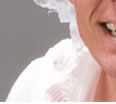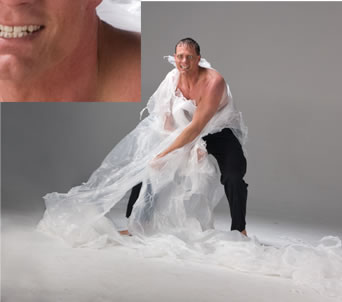 |
I only do staged photography, even if I shoot on location. I am not interested in “f/64” documentary reportage, because I believe that reality is a creation of collective and individual consciousness, and the two-dimensional ready-mades of everyday existence are simply a thin illusory surface hiding the reality where people truly dwell. |
 |
 |
 |
 |
 |
However, my take on staged photography is radically different from any staged photography known to me. The difference is that I stage action produced in performances which very closely resemble theatre and cinema. Usually, art photographers who create staged photography use 8x10 or 4x5 view cameras that do not have automatic focus and require subjects to be very still in front of the camera. This carries on into the aesthetics of imaging. The too-static staged photography seems to lack expressiveness and defeats its goals. My goal is to create images of performances that make people live in front of the camera in a more intense way than how they live in their everyday lives. In this sense, my staged photography is a counter-staged photography, as well as it is a counter-documentary reportage. And that is why my images are not simply movie stills, which are the artificial and mannerist cuts from externalized action. |
 |
I define my style as theatre of absurd documented by photographic means. The project “A New History of Ideas in Pictures” includes works done in the studio in the form of absurd performances. Each image is a part of a set of images (usually 3 to 5), which represents the entire continuous performance. The overall objective of the project is an ambitious programme to evaluate the major concepts of human civilization, like human nature, the origin of man, the universal good and evil, the Divine Father and the Divine Mother, the sacred and the profane, the sublime and the bestial, race, gender and its ambiguities, ego and alter-ego, fetish, super-hero, objectification of women, modes of mass consciousness like modes of seriality and patriarchal domination, modes of inferiority and suffering, and the attitudes towards death.
I predict that very soon humanity, as we know it now, will cease to exist, being changed by computational biology. We have little time left to document humanity in its pure form - with all its suffering and imperfection. |
 |
 |